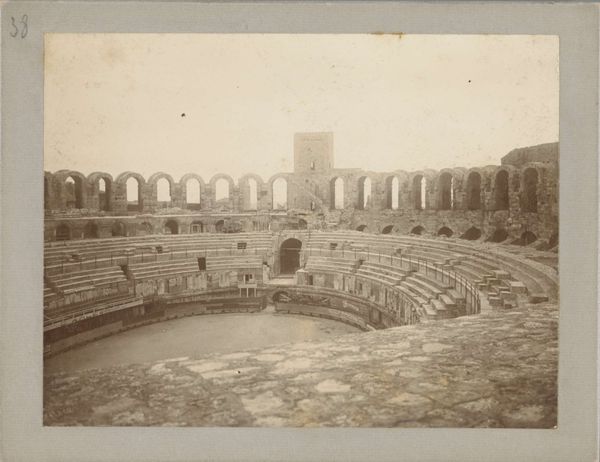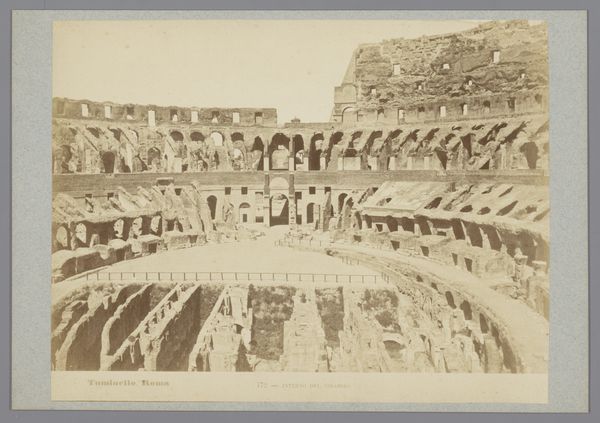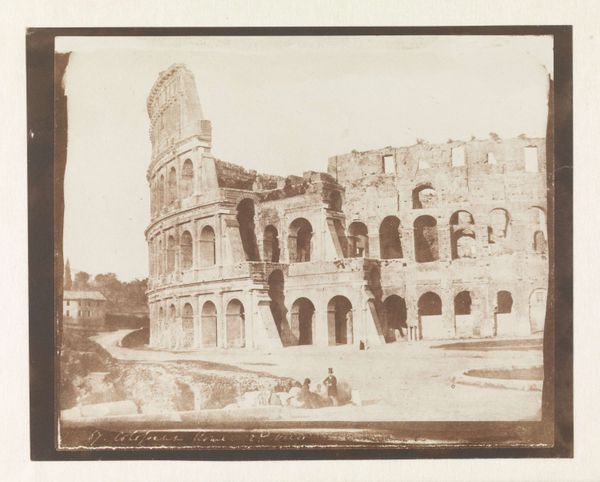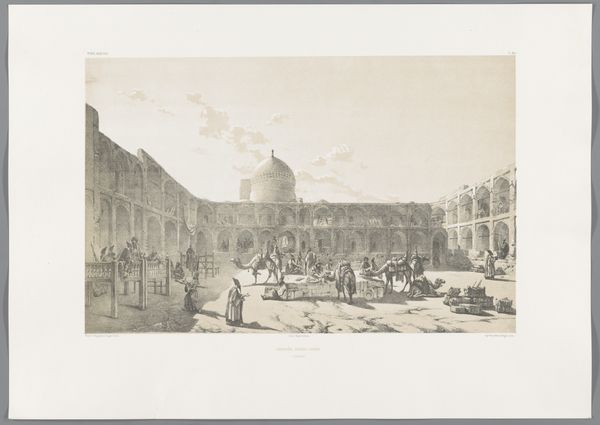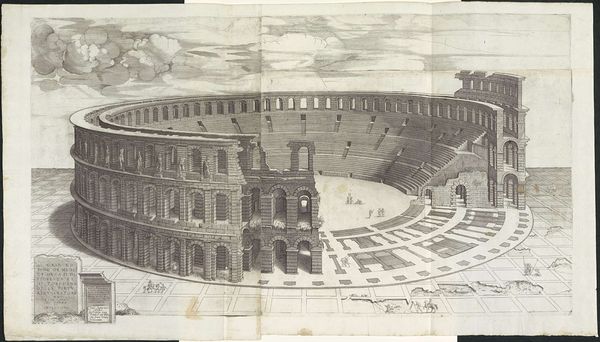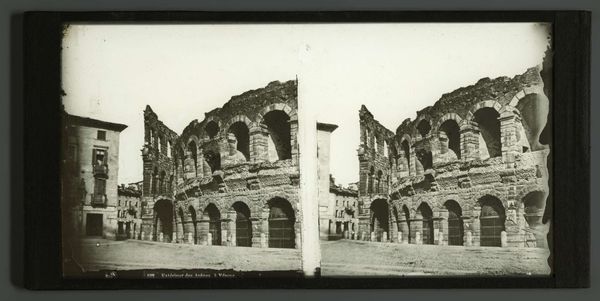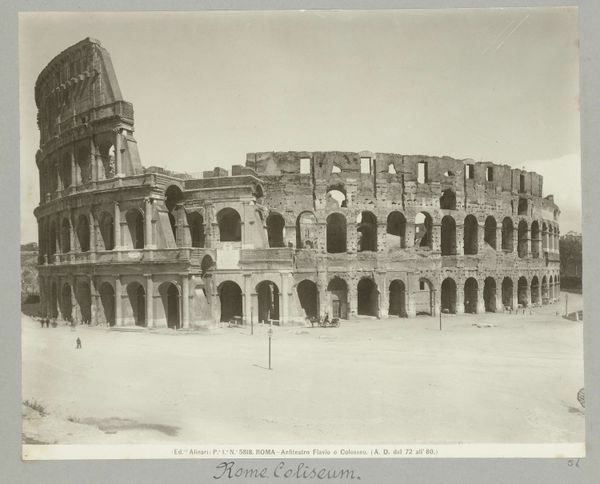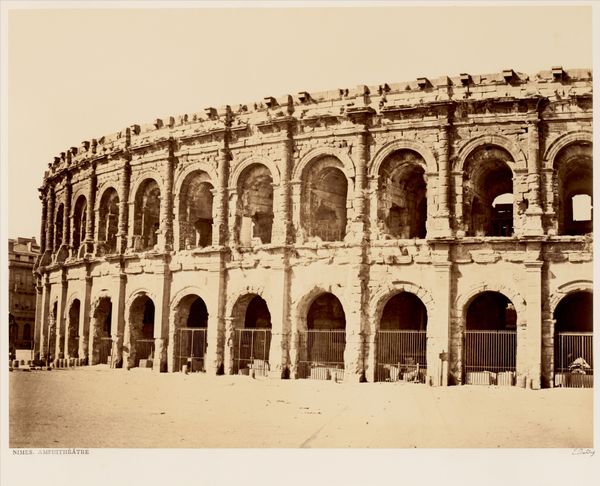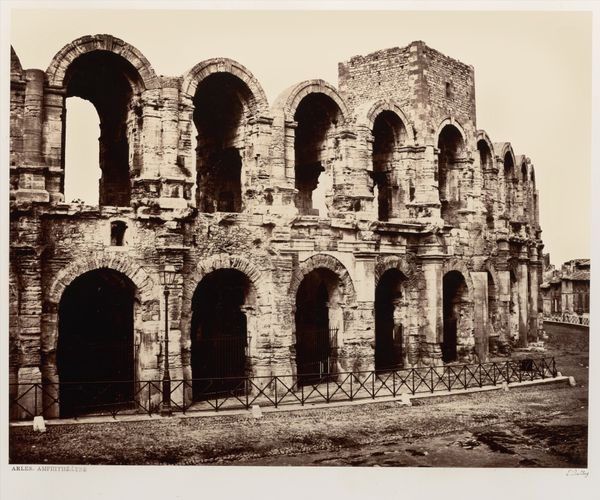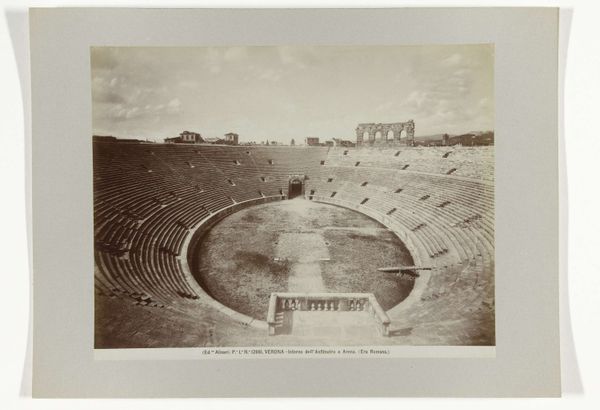
photography, albumen-print
#
photography
#
ancient-mediterranean
#
cityscape
#
albumen-print
#
realism
Dimensions: height 84 mm, width 109 mm, height 98 mm, width 128 mm
Copyright: Rijks Museum: Open Domain
Editor: Here we have "Arena te Arles," a photograph dated circa 1860-1915 by Willem Witsen, held at the Rijksmuseum. It's an albumen print. There’s something ghostly about it…a grand space, empty, yet resonating with history. How do you interpret this work? Curator: Indeed. This image is heavy with the symbolic weight of spectacle and memory. The Arena, originally a Roman amphitheater, speaks of power, entertainment, and the transient nature of empire. But consider how photography itself functions as a recorder of time, layering the present observation of the ruin over its storied past. Editor: So the albumen print itself becomes a kind of artifact, commenting on the arena? Curator: Precisely. What details in the photograph strike you the most, beyond the general sense of “ghostly” grandeur? Editor: I’m drawn to the light. It’s almost bleaching the structure, flattening it… while also highlighting the texture of the ancient stones. Is that intentional? Curator: That interplay of light and shadow is key. Light can symbolize enlightenment, exposure, revealing truth. Here, it almost seems to erode the physicality of the arena, underscoring the passage of time and the fragility of human constructs. Does this resonate with your sense of its mood? Editor: Absolutely. It's both a solid structure and an ephemeral image…a wrestling match between time and memory, in a way. It brings out how much the original meanings have been lost. Curator: Precisely. A cultural memory etched in stone and light. It's intriguing how much meaning a seemingly simple image can hold. Editor: I agree; it's revealed an amazing history, thank you!
Comments
No comments
Be the first to comment and join the conversation on the ultimate creative platform.
